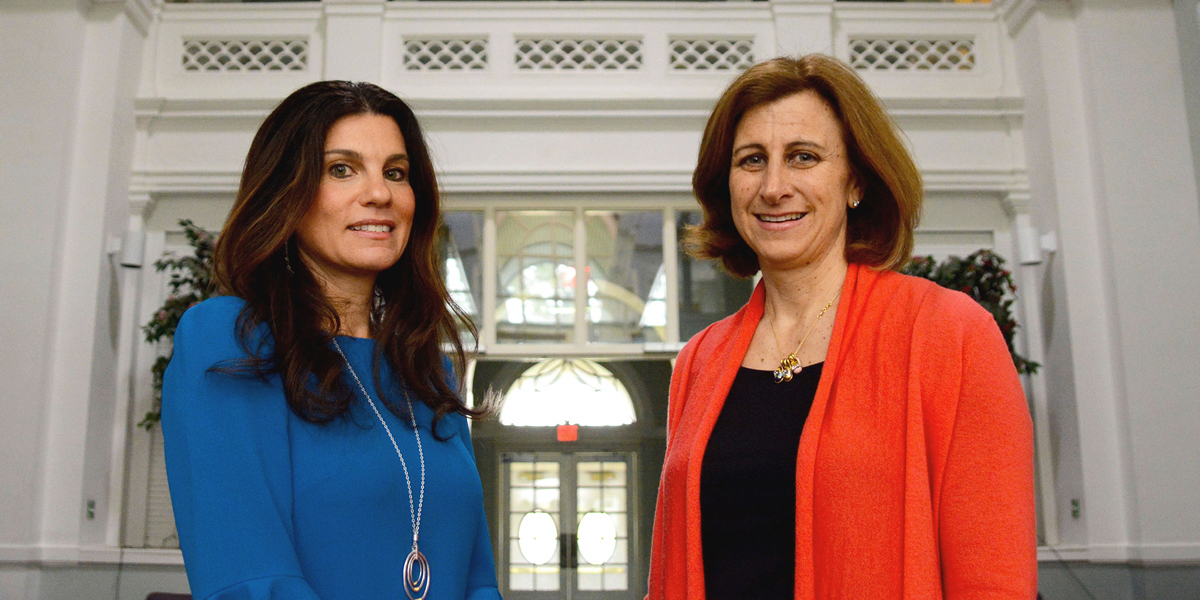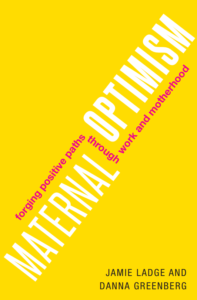How Balancing a Career and Motherhood Makes You Better at Both

In the United States, 70 percent of women with children under the age of 18 take on two competing responsibilities: motherhood and work.
In a now-viral Facebook post, Sara Buckley Friedberg ranted about the immense pressures and expectations placed on working moms. “Fed up with society’s expectations of working mothers,” says The Boston Globe, women like Friedberg are struggling to figure out what it means to be a parent in the 21st century. “I don’t know about you,” said Friedberg, “but I’m ready to lean OUT.”
 This balance for working mothers should be better understood, celebrated, and respected, says Babson Professor Danna Greenberg and alumna Jamie Shapiro Ladge ’95, co-authors of Maternal Optimism: Forging Positive Paths through Work and Motherhood, now available for pre-sale.
This balance for working mothers should be better understood, celebrated, and respected, says Babson Professor Danna Greenberg and alumna Jamie Shapiro Ladge ’95, co-authors of Maternal Optimism: Forging Positive Paths through Work and Motherhood, now available for pre-sale.
The book dives into the uniqueness of each working mother’s journey as she navigates the complexities, challenges, and joys that come with work and life transitions.
“All too often, women are presented with blanket advice, as if all of their experiences with womanhood, motherhood, and career are the same. Jamie and I believe that there isn’t a one-size-fits-all solution,” said Greenberg.
What Is Maternal Optimism for Working Mothers?
By understanding and being more aware of life’s transitions, working mothers can develop the resiliency they need at home and at work, and actually use this skill to better manage the unpredictable.
“We’ve studied the challenges that come with integrating work in motherhood,” said Greenberg. “The guilt, lack of self-esteem, and identity issues—all in addition to the stress of simply not having enough time in the day. These challenges are real but so, too, is the fact that work can make you better at home, and being a mother can help you more successfully navigate your career.”
In Harvard Business Review’s (HBR) podcast Women at Work, Greenberg describes some of the underlying stressors she sees with women who struggle to find the positives of being a working mother: “So much of it is about going to work with clothes that are messed up, your hair undone, worrying about how your boss is going to see you, worrying about how the stay-at-home moms on the playground are going to see you.”
In another HBR piece, Greenberg and Ladge bring to light the working mother’s challenges that continue well into their children’s teen years: “Unfortunately, bosses and colleagues who may have been accommodating of a new mother’s need to pump breast milk or take maternity leave are often less aware or accepting of the demands a working mother faces as her children get older. At the same time, job responsibilities are increasing as parents move ahead in their careers. Sometimes the choices women make about work and family can feel more difficult because of the invisibility of mothering older children.”
In their book, the authors “really wanted to first and foremost come at this with a very positive spin,” added Ladge. “Not that it’s all positive, but there are experiences that women face throughout the course of their motherhood transitions that work really well.”
One of the biggest benefits of being a working mom? Perspective.
According to the team’s research, there’s a better sense of the big picture. This leads to enhanced productivity, rather than the need for perfection. “One of the things that women often do is they want everything to be perfect,” said Greenberg. “When they return to work after having a child, they realize everything doesn’t need to be done perfectly and that this expectation isn’t helpful for my team.”
Another benefit: relational capacity. After becoming a mother, some women find themselves more empathetic, supportive, and developmental in how they approach their colleagues and direct reports. “Women will say, ‘All of a sudden, I’m better with my employees,’” said Greenberg when describing how working mothers explain this shift. “They say, ‘I am more thoughtful … I don’t always agree with what they’re saying, but I have a little bit more patience … than maybe I didn’t have before becoming a parent.’”
Testing Transitions and Setting Realistic Expectations
For Greenberg, her longstanding interest in work, family, and community took an upswing when she experienced her own challenges integrating work and family as a pre-tenured faculty member at Babson.
“I was teaching six courses and conducting research, I was pregnant with my second child, and my husband was living and working in Texas,” she said.
She didn’t know exactly how she was going to make everything work, but knew she had to figure out a way to grow in both directions.
“My division chair and the dean of faculty helped me devise a plan to make maternity leave and my return to work, work. The adjustments we made saved both my career and my sanity. The support the leadership showed increased my loyalty and commitment to the College.”
The lesson: Be more aware and understanding of your own needs for work and family, and be flexible as you work to set more realistic expectations across all areas of your life.
Both Greenberg and Ladge are continuing to research, write, and advise on the nuances that come with being a woman in today’s workforce. At this year’s South by Southwest (SXSW) Conference in Austin, Texas, Greenberg joined Ovia Health for a panel, Moms are Working—Why Aren’t Our Policies, to raise awareness of the biases, discriminations, and workplace limitations that often arise when new moms return to work, and the ways in which leading companies support their employees in succeeding at home and at work.
For Greenberg and Ladge this book is more than just a culmination of almost two decades of research; it is their passion for reinventing the conversation around work and motherhood and for helping organizations, families, and communities thrive in today’s demanding world.
Pictured: Co-authors Jamie Shapiro Ladge ’95 (left) and Danna Greenberg (right)
Posted in Insights





